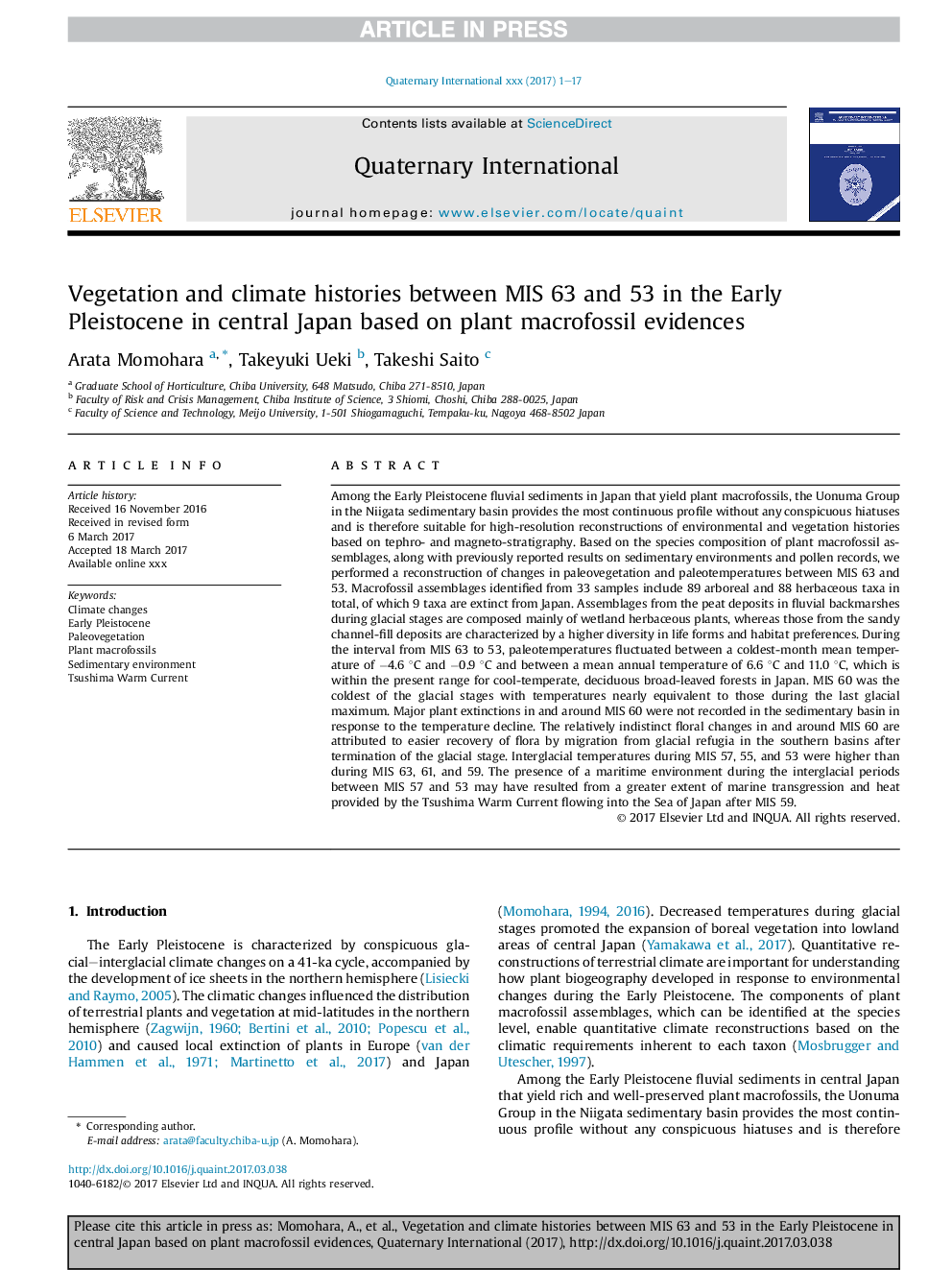| کد مقاله | کد نشریه | سال انتشار | مقاله انگلیسی | نسخه تمام متن |
|---|---|---|---|---|
| 5112974 | 1484068 | 2017 | 17 صفحه PDF | دانلود رایگان |
عنوان انگلیسی مقاله ISI
Vegetation and climate histories between MIS 63 and 53 in the Early Pleistocene in central Japan based on plant macrofossil evidences
دانلود مقاله + سفارش ترجمه
دانلود مقاله ISI انگلیسی
رایگان برای ایرانیان
کلمات کلیدی
موضوعات مرتبط
مهندسی و علوم پایه
علوم زمین و سیارات
زمین شناسی
پیش نمایش صفحه اول مقاله

چکیده انگلیسی
Among the Early Pleistocene fluvial sediments in Japan that yield plant macrofossils, the Uonuma Group in the Niigata sedimentary basin provides the most continuous profile without any conspicuous hiatuses and is therefore suitable for high-resolution reconstructions of environmental and vegetation histories based on tephro- and magneto-stratigraphy. Based on the species composition of plant macrofossil assemblages, along with previously reported results on sedimentary environments and pollen records, we performed a reconstruction of changes in paleovegetation and paleotemperatures between MIS 63 and 53. Macrofossil assemblages identified from 33 samples include 89 arboreal and 88 herbaceous taxa in total, of which 9 taxa are extinct from Japan. Assemblages from the peat deposits in fluvial backmarshes during glacial stages are composed mainly of wetland herbaceous plants, whereas those from the sandy channel-fill deposits are characterized by a higher diversity in life forms and habitat preferences. During the interval from MIS 63 to 53, paleotemperatures fluctuated between a coldest-month mean temperature of â4.6 °C and â0.9 °C and between a mean annual temperature of 6.6 °C and 11.0 °C, which is within the present range for cool-temperate, deciduous broad-leaved forests in Japan. MIS 60 was the coldest of the glacial stages with temperatures nearly equivalent to those during the last glacial maximum. Major plant extinctions in and around MIS 60 were not recorded in the sedimentary basin in response to the temperature decline. The relatively indistinct floral changes in and around MIS 60 are attributed to easier recovery of flora by migration from glacial refugia in the southern basins after termination of the glacial stage. Interglacial temperatures during MIS 57, 55, and 53 were higher than during MIS 63, 61, and 59. The presence of a maritime environment during the interglacial periods between MIS 57 and 53 may have resulted from a greater extent of marine transgression and heat provided by the Tsushima Warm Current flowing into the Sea of Japan after MIS 59.
ناشر
Database: Elsevier - ScienceDirect (ساینس دایرکت)
Journal: Quaternary International - Volume 455, 7 October 2017, Pages 149-165
Journal: Quaternary International - Volume 455, 7 October 2017, Pages 149-165
نویسندگان
Arata Momohara, Takeyuki Ueki, Takeshi Saito,